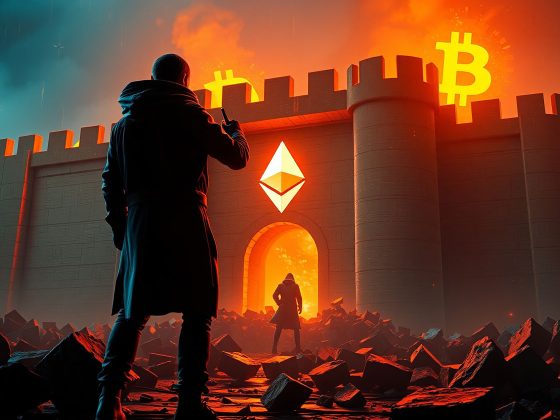Ethereum has long been one of the most dominant blockchains in the world of cryptocurrencies. But lately, there’s been growing talk about its long-term sustainability challenges. Charles Hoskinson, the founder of Cardano, has raised eyebrows with his bold prediction that Ethereum might follow in the footsteps of tech giants like BlackBerry and Myspace – fading away in the next 10-15 years. So, what’s behind this prediction? 🤔 Let’s dive into why Ethereum’s future may not be as secure as many people think!

Ethereum’s Key Challenges: Why It Might Struggle in the Future
Ethereum is undeniably a brilliant project, but there are some fundamental issues in its structure that could cause trouble as time goes on. Charles Hoskinson, co-founder of Ethereum, has pointed out that its outdated technical architecture and inefficient consensus model could be its downfall. Ethereum’s accounting model, virtual machine, and proof of stake system have been criticized for not being optimized for long-term success. While Ethereum has pioneered the blockchain world, it’s facing some serious competition from newer systems that offer better efficiency. ⚡
Layer 2 Solutions: Helping or Hurting Ethereum?
One of the major long-term sustainability challenges Ethereum faces is the rise of Layer 2 solutions. While these solutions were designed to scale Ethereum and make transactions faster, they may actually be fragmenting the ecosystem and draining value from the main network. As Ethereum’s Layer 2s take up more of the market share, it could eventually lead to a situation where Ethereum itself becomes less relevant, just like Myspace did in the early days of social media. 😕
The Decline in Ethereum’s Network Activity
Currently, Ethereum’s network activity is showing worrying signs of a slowdown. Important metrics, such as transaction fees and network usage, have dropped to multi-year lows. Furthermore, Ethereum’s transition to a deflationary model seems to be backfiring, and Ether (ETH) is no longer performing as expected. With institutions like Galaxy Digital shifting their investments from ETH to Solana, it’s clear that Ethereum is facing significant competition in the market. 🔴
Will Solana Overcome Ethereum?
One thing that can’t be ignored is the rise of Solana. Solana’s network has been growing rapidly, and many believe it could overtake Ethereum in the race for decentralized finance (DeFi) supremacy. While Ethereum’s network is bogged down by inefficiencies, Solana’s fast and scalable blockchain offers a much smoother experience for developers and users alike. As Hoskinson suggested, the future may belong to ecosystems that are smarter, more efficient, and able to evolve quickly enough to keep up with the market’s needs. 🚀
Can Ethereum Adapt to the Challenges?
Despite the current challenges, there are still reasons to be optimistic about Ethereum’s future. The team behind Ethereum is constantly working on upgrades, and the network’s transition to Ethereum 2.0 could bring about improvements that address some of its core issues. But the question remains: Will it be enough to overcome the competition and the issues that have already begun to arise? Only time will tell! ⏳
Conclusion: The Future of Ethereum
So, what does all this mean for the future of Ethereum? While it’s too early to declare its demise, it’s clear that Ethereum’s long-term sustainability challenges are real. With competition from Solana and other blockchains, Ethereum will need to evolve quickly to stay relevant. However, the fact that Ethereum has dominated the market for so long means it still has a strong chance to adapt and lead again. Just like any great company, it may face some rough patches, but there’s always room for growth and reinvention! 🌱












